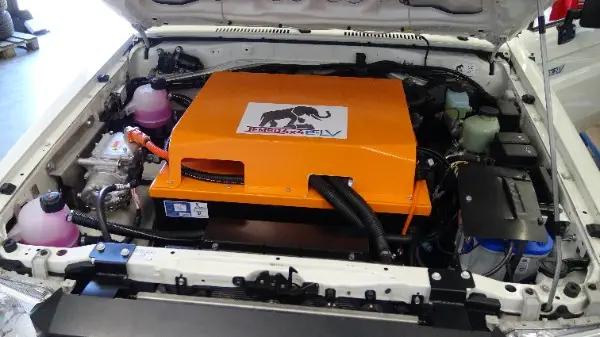Electric vehicles and hybrid vehicles are two popular options for business owners looking to change their company’s fleets. Both vehicles provide practical and economic benefits that make switching fleets worthwhile. The only question is which one of them would fit best with the organisation’s operations.
In this article, we’ll discuss what electric and hybrid vehicles are. We’ll also show the different advantages and disadvantages of owning one over the other.
What are electric vehicles?

Electric vehicles (EVs) do away with petrol and diesel engines in favour of an electric motor. This allows them to run purely on electricity instead of traditional fossil fuels.
Power for EVs comes from batteries – typically lithium-ion – stored either under the hood of the vehicle, in the rear, or both. These can be charged by plugging the vehicle into a power source at home or elsewhere.
To make the EV system more sustainable, many adopters use renewable energy sources such as solar or wind power generators.
What are hybrid vehicles?

As the name suggests, hybrid vehicles offer users multiple energy sources. They typically have an internal combustion engine (ICE) that serves as their primary motor.
However, these vehicles also have a battery-powered electric motor albeit in a smaller capacity compared to EVs.
Hybrids make use of fossil fuels to power their main engine. The electric motor is designed more to supplement petrol or diesel driving. It also helps maximise fuel efficiency for the vehicles.
There are two common types of hybrid vehicles:
Standard hybrids – These vehicles use their internal combustion engine along with regenerative braking to charge their battery packs. They can’t be charged at charging stations as most other electric vehicles do.
Plug-in hybrids – These vehicles have larger battery packs compared to standard hybrids. This gives them the option to drive only on electric power. Plug-in hybrids can be charged at charging stations like electric vehicles.
Advantages and disadvantages
Just like with any other type of vehicle, EVs and hybrids offer drivers several advantages and disadvantages. Choosing which vehicle to buy often depends on the user’s needs and preferences .
Electric vehicles
Advantages
1. EVs use electricity instead of fossil fuels.
2. They don’t need regular petrol or diesel fill-ups.
3. They have fewer moving parts to repair or maintain.
4. EV motors are quieter to operate than internal combustion engines.
5. They don’t produce any greenhouse gases like CO2.
Disadvantages
1. Electric vehicles currently have a higher cost compared to most other types of vehicles.
2. Many current EV models have shorter driving ranges than ICEs or hybrids.
3. They require a network of charging stations to be used for longer drives.
Hybrid vehicles
Advantages
1. Hybrid vehicles can use their internal combustion engine, electric motor, or both at the same time.
2. They have longer driving ranges than most current EV models.
3. Hybrids can run without charging a battery via a charging station.
Disadvantages
1. Hybrids still need regular petrol or diesel fill-ups like traditional ICE vehicles.
2. Their engines have a more complex mechanical structure than all-electric motors.
3. They require regular maintenance work on their air, oil, and fuel filters.
4. Since hybrid vehicles still use fossil fuels, they produce CO2 emissions.
Which vehicle should you choose?

There’s no right or wrong answer when it comes to picking between electric vehicles and hybrid vehicles. At the end of the day, the choice boils down to what business owners think fits best with their operations and fleet requirements.
Hybrids offer drivers the opportunity to use the internal combustion engine along with the electric motor. This ensures that the vehicle won’t easily run out of power especially during long drives. There’s always the option to switch from petrol or diesel fuel to 100% electric whenever the business deems fit.
However, since hybrid vehicles still run on fossil fuels, they still produce CO2 emissions. They can help companies lower their greenhouse gas emissions, but not to the extent that EVs can.
Electric vehicles provide a more concrete solution to cutting CO2 emissions. They are 100% battery-operated so they won’t produce any greenhouse gasses.
Newer and better EV models are also being produced that can drive longer distances than previous models. This will help close the gap between electric and hybrid vehicles as far as the overall range goes. Tembo e-LVs are an excellent example of improved electric vehicles.
Thinking of fleet electrification for your business or organisation? Contact VivoPower for more information.
